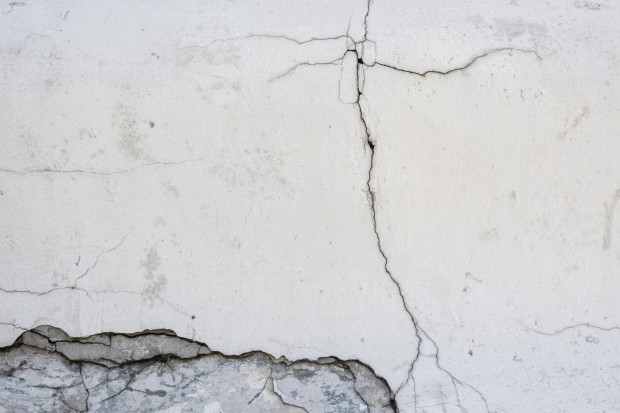Cracks can develop in various structures, including your house, due to settling, temperature changes, or structural issues. While minor cracks are common and often harmless, there are certain signs that indicate a more serious problem.

(Photo : Pexels/Marina Leonova )
1. Vertical cracks
Plaster walls in newly constructed homes frequently exhibit these kinds of minute cracks. When the plaster swells in response to dampness and then shrinks as it cures, many problems may occur. To avoid further cracks, you should wait a while before sealing the gaps and repainting them. This is because additional cracks may emerge. Moreover, if the vertical cracks are broader than 0.5 centimeters, there may be a more severe reason which should be addressed.
2. Ceiling Cracks
Ceiling cracks may result from various factors, such as plaster contraction, moisture, or structural movement. Therefore, it is highly recommended that a trained specialist examine them. Fixing a drywall ceiling is not as simple as patching a break in an internal wall; thus, you should consider hiring a professional to restore it to a satisfactory level.
3. Temperature and Shrinkage
The presence of horizontal fissures in the wall's center can be attributed to various factors, including an applied load resulting from factors such as improper or premature compaction of backfill around the foundation, compaction of settling earth, hydrostatic stress against the ground due to a high water table and insufficient drainage against the foundation wall, or the operation of heavy equipment too soon or too close to the foundation wall. Frost damage is the most frequent cause of horizontal cracks discovered high up on the wall or other surfaces. In addition, there are times when these minute fissures go unnoticed for extended periods. It is recommended that a structural engineer be consulted in a situation such as this one.
Also Read: 5 OSHA Penalties on Construction Companies this 2024
4. Hairline
Concrete foundations can create cracks only a few millimeters wide during the curing process. Hairline cracks cause no issues with the foundation's stability; nonetheless, issues with leaking are encountered. When fractures occur in the concrete foundation not long after it has been poured, it is possible that the concrete needs to be mixed correctly or poured too soon. Hairline cracks are more likely to form in the center of the walls of poured concrete foundations. This is because the corners of the walls demonstrate better stability.
5. Structural Foundation Crack
Because they threaten the structural integrity of your home, cracks of this kind are severe and should be avoided at all costs. Horizontal fractures and cracks more comprehensive than a quarter of an inch have been identified as certain indicators of structural defects. Cracks in structural foundations are frequently the consequence of motion, which can be caused by changes in temperature, soil pressure, or contraction. Due to the ongoing potential for movement-induced stress initially initiating the fracture, epoxy is typically insufficient to guarantee successful crack repair. It is frequently essential to insert additional support, which can take the shape of carbon fiber countersunk staples or straps, to ensure the crack will not expand.
Related Article: Key Strategies to Unlock Success in Construction Financial Management







